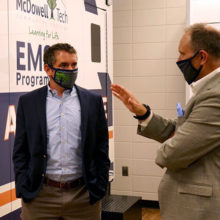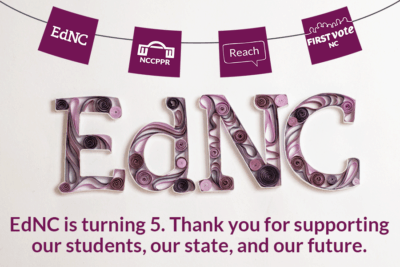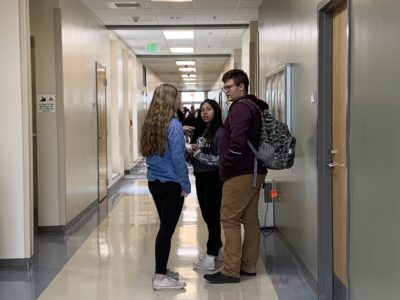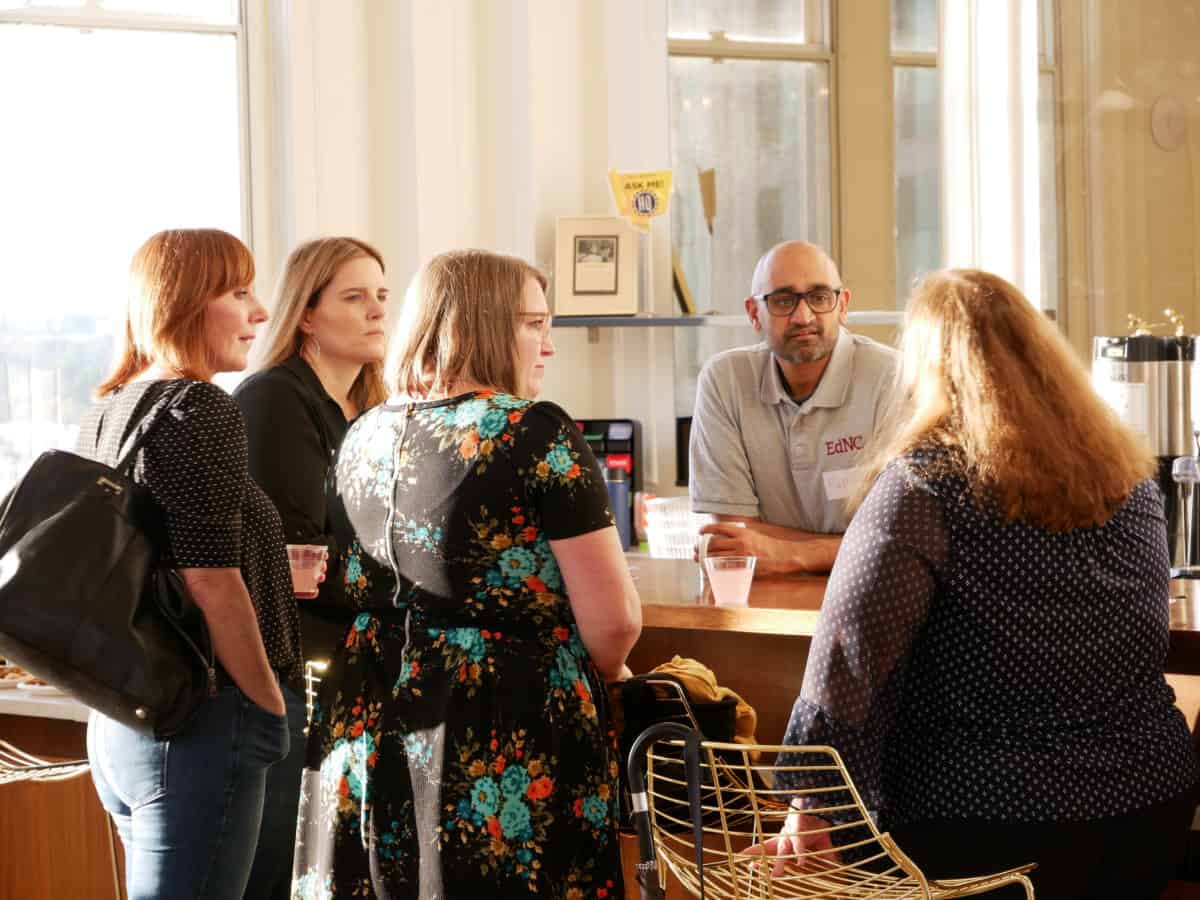
“Who cares about education in North Carolina?”
This question kept rattling around in my mind as I considered how EdNC could best serve our audience, the broader education community in North Carolina, and expand our impact.
Consider how you might answer that question.
You might begin with teachers. After all, they have dedicated themselves to public service, and their paychecks, daily experience, and career are determined by what happens within our schools and colleges.
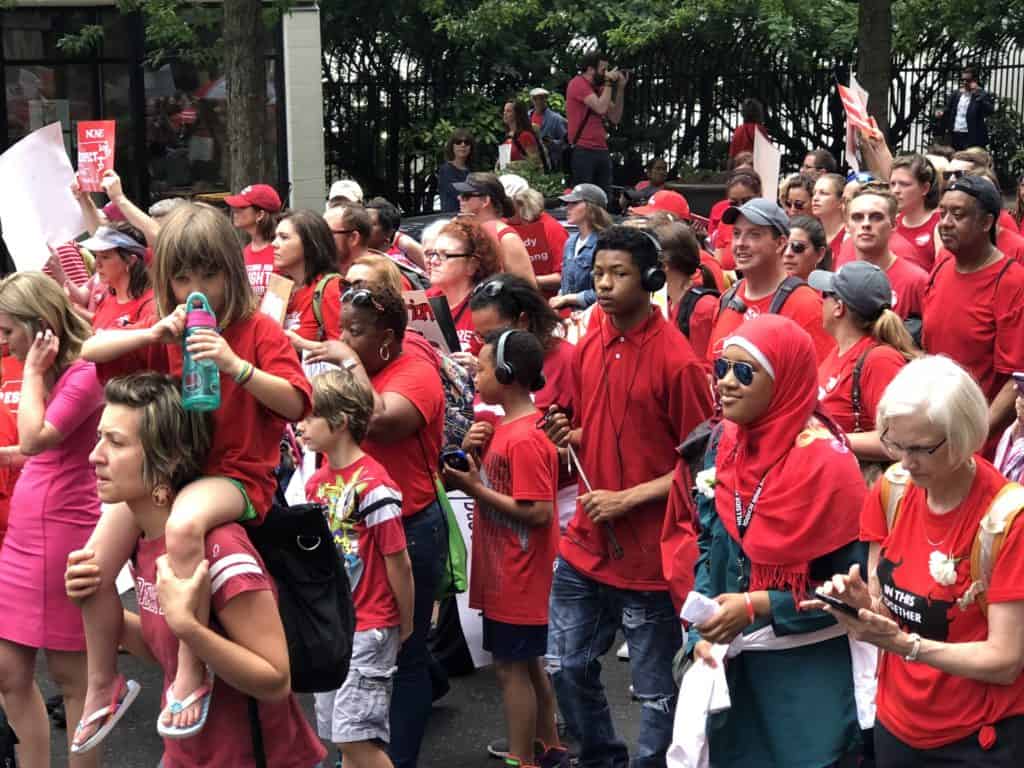
Principals, other administrators, and staff also might make your list.
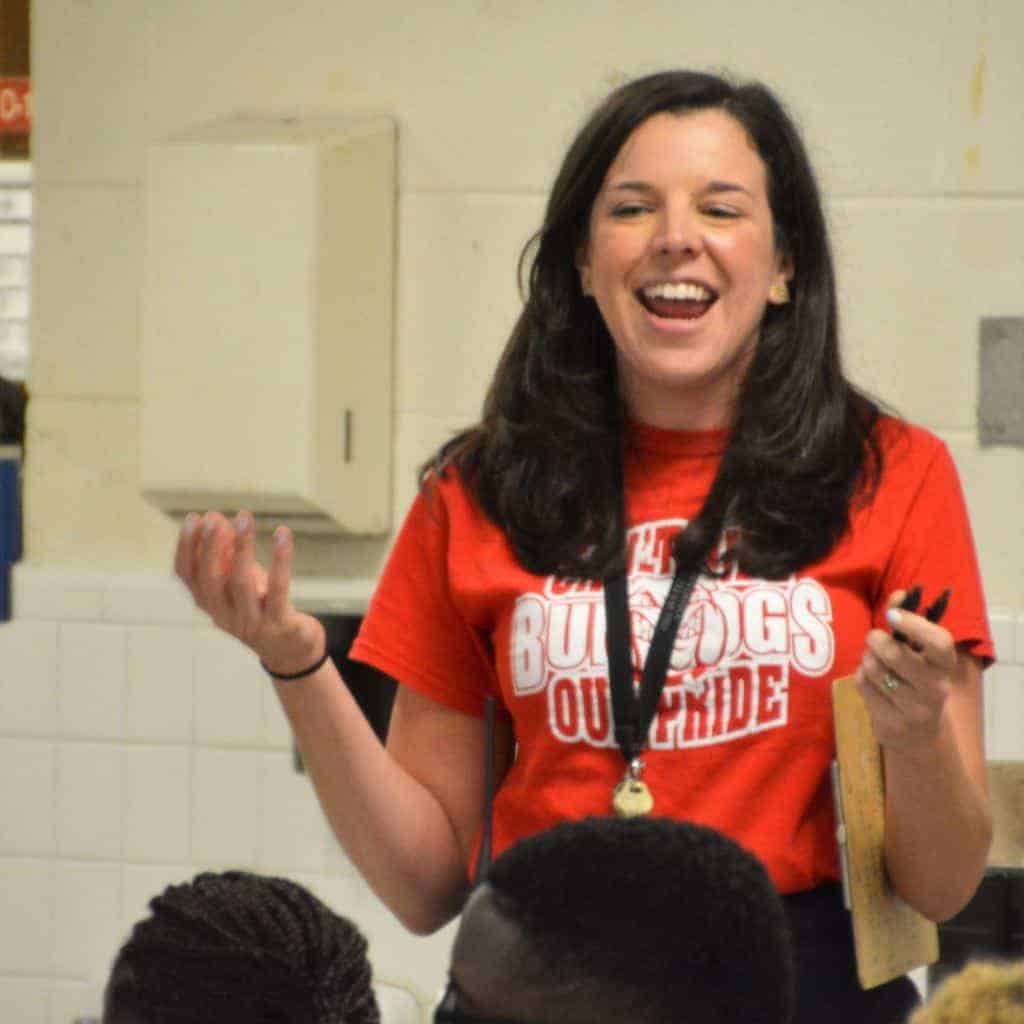
Whom else would you add? Elected leaders? Advocates?
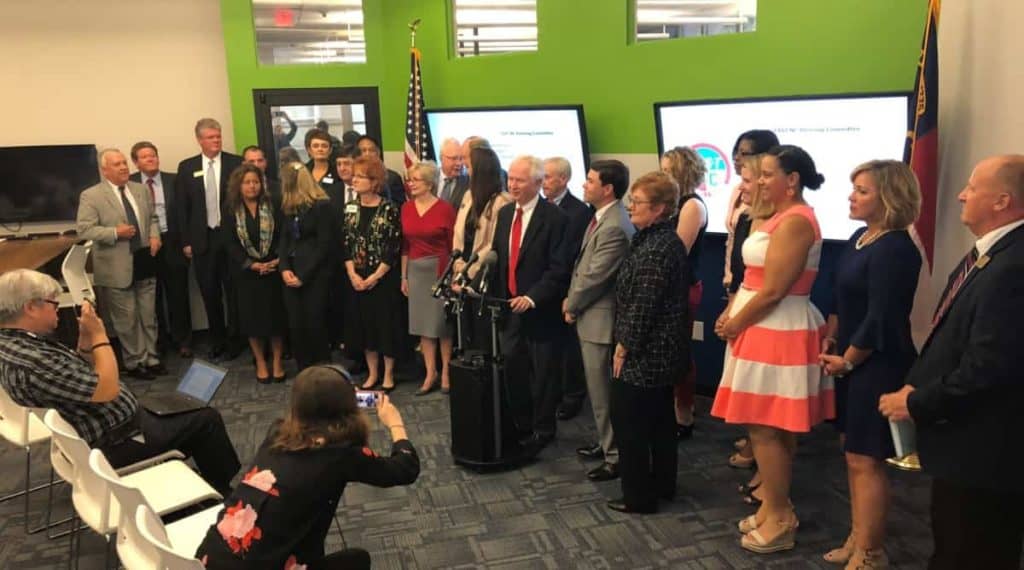
As EdNC expanded our coverage to community colleges and postsecondary access, I traveled to dozens of our 58 community colleges to meet faculty, staff, and the leadership team of college after college. I learned they care a whole lot.
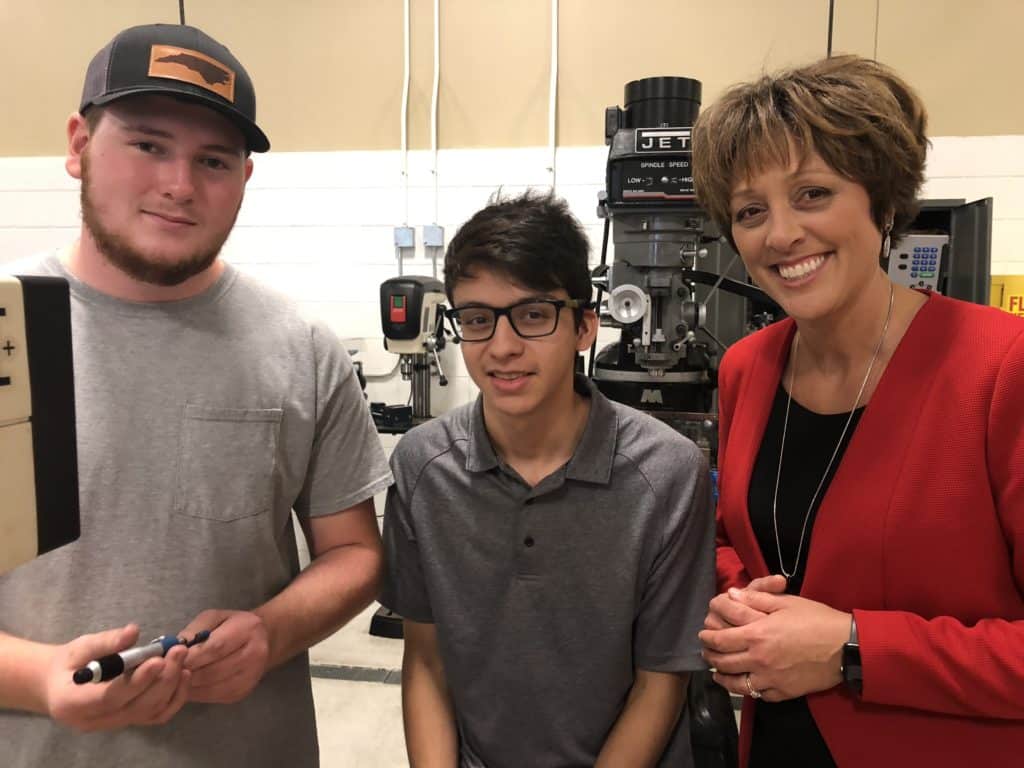
Our work at EdNC takes us to the General Assembly, the governor’s office, the Department of Public Instruction, and the system office of the NC Community Colleges. When you walk those halls, you recognize how many public servants are involved in our complex systems of governance. They would make my list too.
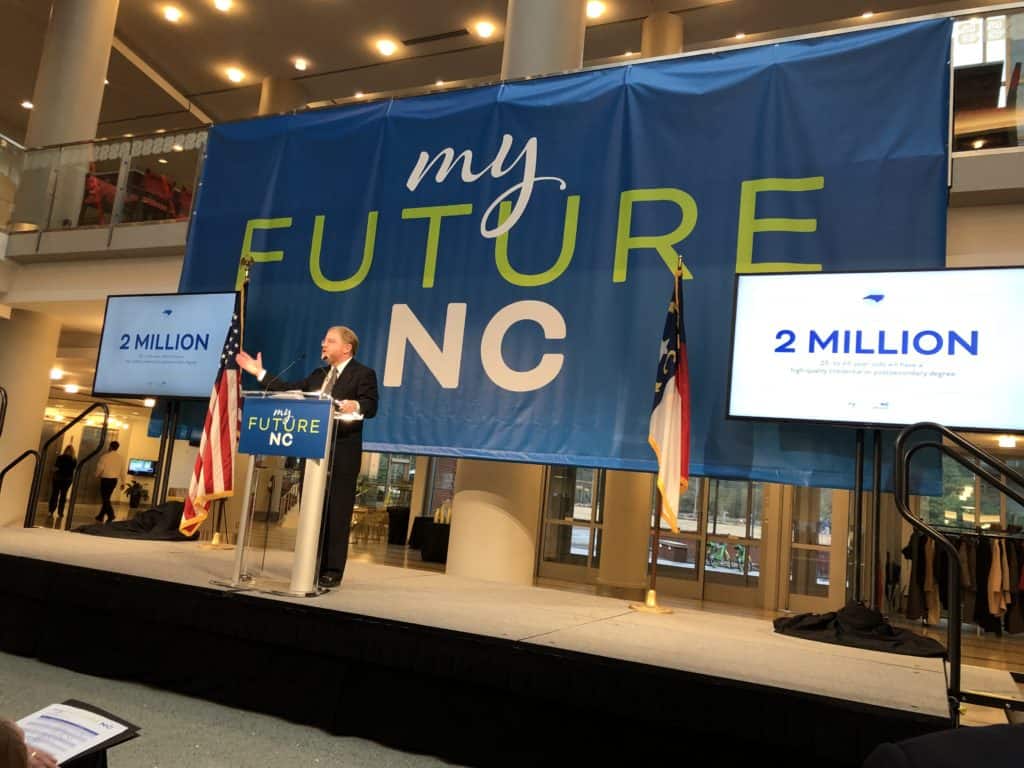
In early 2019, I was invited to participate in the Media Transformation Challenge. MTC is a performance-focused leadership development program that provides individuals with expert coaching, while zeroing in on an overall organizational challenge that needs to be tackled for a media organization to thrive. It is an inspiring program with a tremendous set of alumni who intimidate me deeply, while also reminding me why I am attracted to media work in the first place.

The question of who cares came up as I began to wrestle with our organizational challenge.
My coach for MTC, Tim Griggs, first coached EdNC through the Knight-Lenfest Table Stakes program at the UNC Hussman School of Journalism and Media. He had come to know our team, particularly Mebane, well throughout the process, so he knew what questions to ask.
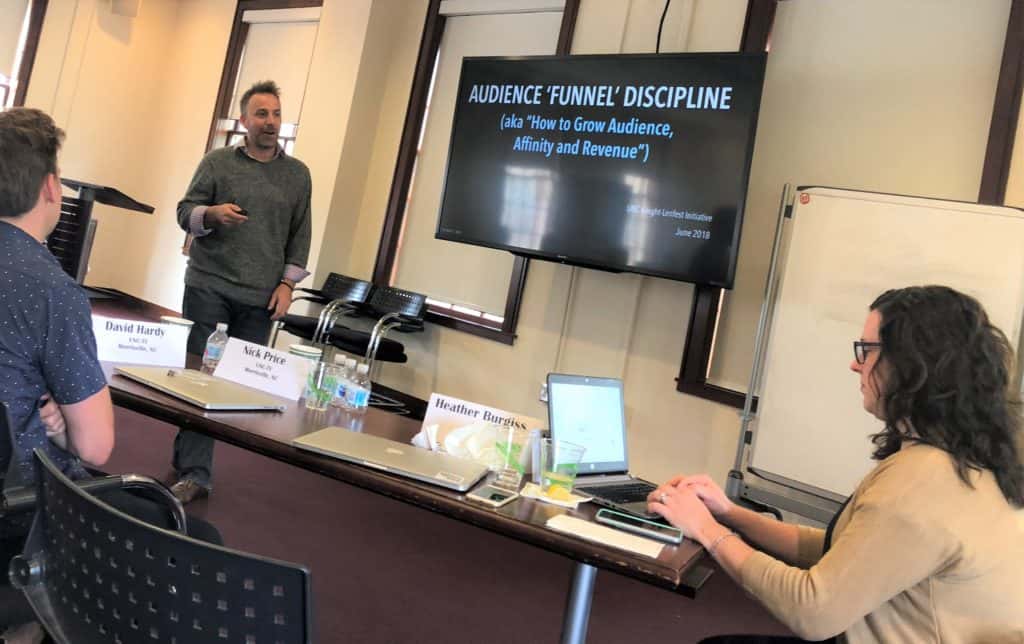
Tim knew we cared deeply about our audience, but even more about our state. Why the distinction? Because as we travel, we meet plenty of people who do not read EdNC.org — and who may never read EdNC.org — and we certainly care deeply about them. He knew it had always been our belief that our work does not begin and end with an article posted on our site, but it begins in the communities we serve, and it ends (when we do our best work) with impact.
EdNC’s theory of change includes seven drivers of impact: journalism as the fourth estate in a democracy, in-depth research, building and engaging our audience, tracking the impact of our work, moving the needle on policy change, responsive experimentation in the new media and nonprofit world, and increasing leadership capacity statewide.
We continually wrestle with how to measure our impact against the backdrop of this theory of change. And as I began the MTC process, Tim kept pushing me on questions of audience: Who are they? How do we reach more people like them? How do we meet our audience — and prospective audience — where they are?
On one particularly challenging phone call Tim asked with a sigh, “But who exactly are you trying to reach?”
I stumbled over a litany of occupations before finally saying, “I guess anyone who gives a damn about education.”
His response was classic Tim: “There you have it. That’s your challenge. You need to figure out who gives a damn about education and then you need to reach more of them.”
From there, our journey began in earnest.
Listening is key
The MTC and Table Stakes programs are built on “design-do” loops. The method is to design experiments that allow you to test approaches to reach your overall goal quickly and efficiently. As one of my colleagues in the program once said, “The goal here is to fail fast, so we might succeed soon.”
A human-centered approach built on listening was the only way we knew to go about it.
Our blitz of all 58 community colleges was the best example we had of this process.
As we calculated the number of folks who might care about education in our state, we recognized that in addition to teachers, administrators, community college faculty and staff, advocates, philanthropists, and policyshapers and policymakers, we also needed to better understand how to serve parents and students.
Liz Bell, our intrepid early childhood reporter, and I began to talk about how she could super-serve parents of young children as part of our first design-do loop.
My MTC colleague Ashley Alvarado and her team at KPCC have blazed a trail in orienting their work around listening, so we called them for advice. Their first recommendation was to go where parents are and listen. So we did.
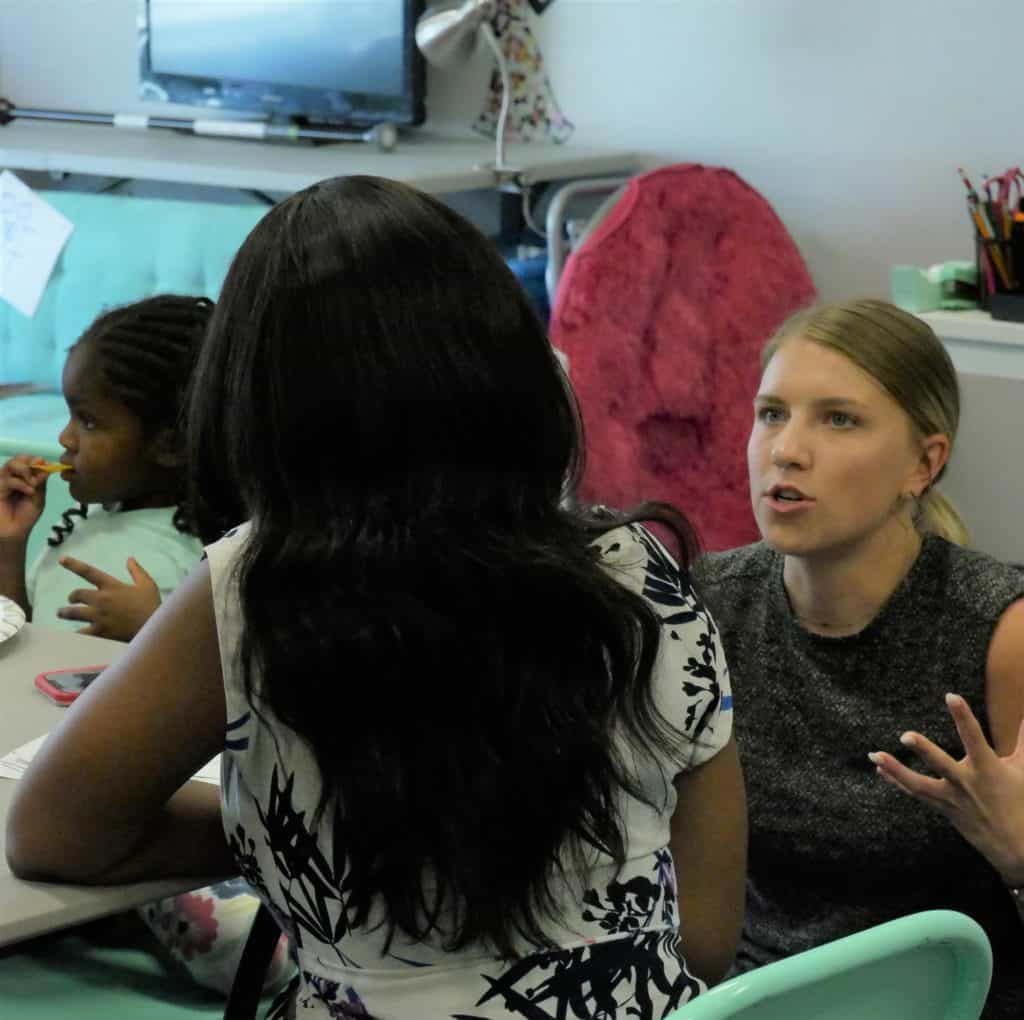
The conversations we hosted led us to plenty of questions that Liz could set out to answer.
Why is childcare so expensive? How are the state’s ratings of childcare centers determined? Why do early childhood educators have such a high rate of turnover?
This listening grounded the launch of Liz’s newsletter Early Bird, which rolled out in August. We also listened as we determined its approach — and even its timing as Early Bird became our first newsletter that goes out on a Sunday.
Our next design-do loop has been focused on community college students. With the support of the Facebook Journalism Project and the John M Belk Endowment, we launched a series of Awake58 Student Town Halls last fall.
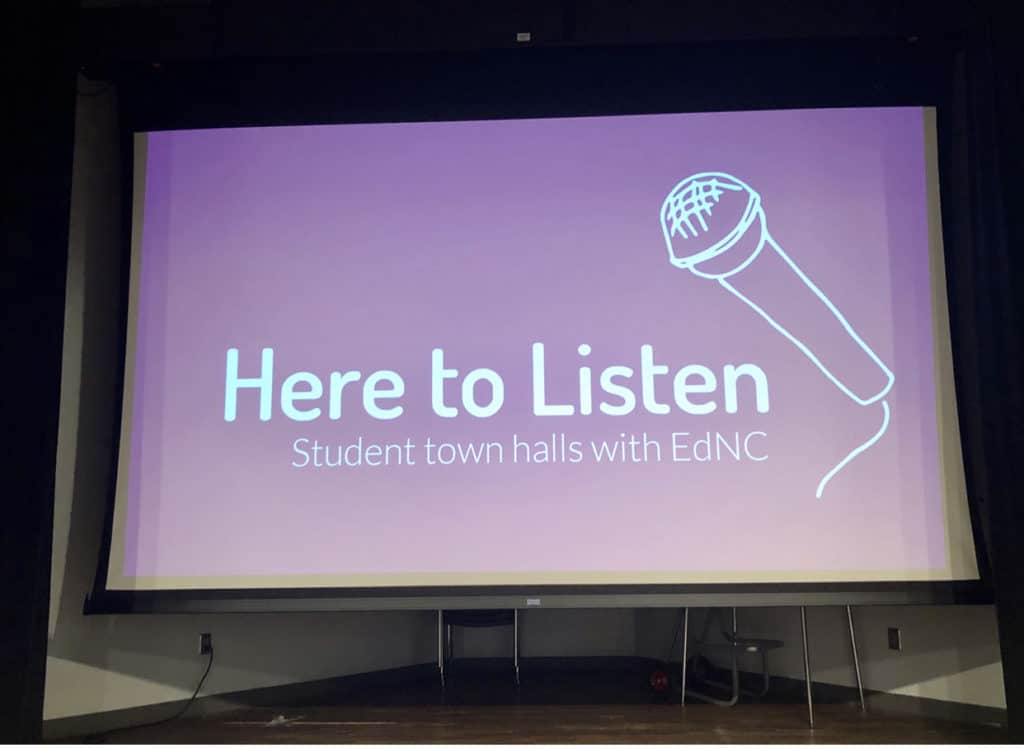
We’ve held seven town halls across five campuses. In February, we have two more scheduled, and we intend to continue to build relationships with the students in a myriad of ways.
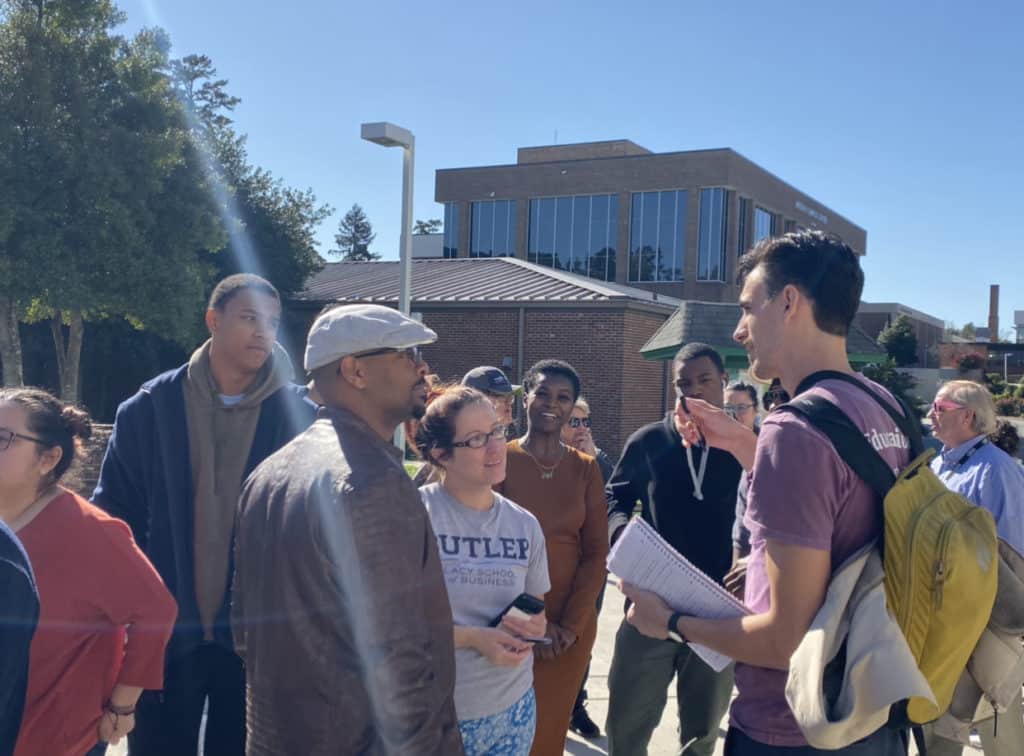
We’ve learned that Instagram, Snapchat, and occasionally Facebook Messenger are primary ways of consuming information for students. This feedback tracks with Nico Gendron’s research for her Reynolds Journalism Institute fellowship.
We’ve also learned that texting is a critical way to reach these folks. And that’s why texting is a core feature in our Reach suite of engagement tools.
This design-do loop led us to launch a Virtual Town Hall targeted at students across the state. The Virtual Town Hall uses Reach’s Consensus tool to allow students to vote on their priorities, and even submit their own.
We will publish the results this winter — and they will continue to inform our work.
We held other design-do loops throughout the fall — including a listening session with my colleague Rupen Fofaria, who is focused on reporting on learning differences. And we spent more time on national collaborations with groups such as the Spotlight on Poverty and Opportunity and MSN.com.
My friend and colleague Terry Parris Jr. at The CITY in New York has pioneered an approach called the Open Newsroom. He and I were asked to speak at the Hearken Engagement Summit this fall, and as we planned our presentation we realized we could bring the Reach suite of listening tools together with the Open Newsroom to build a wraparound approach to listening.
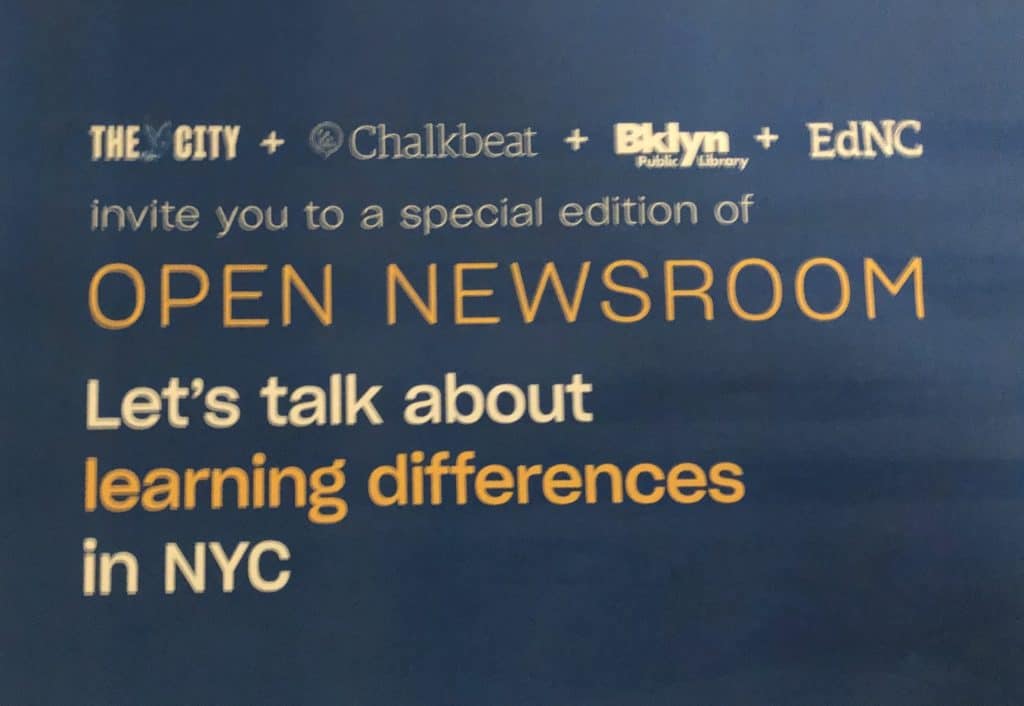
As Terry and I talked in the run-up to the conference on one of those crisp New York City nights that makes you feel truly alive, we realized that all of our work was adding up to a series of listening funnels.
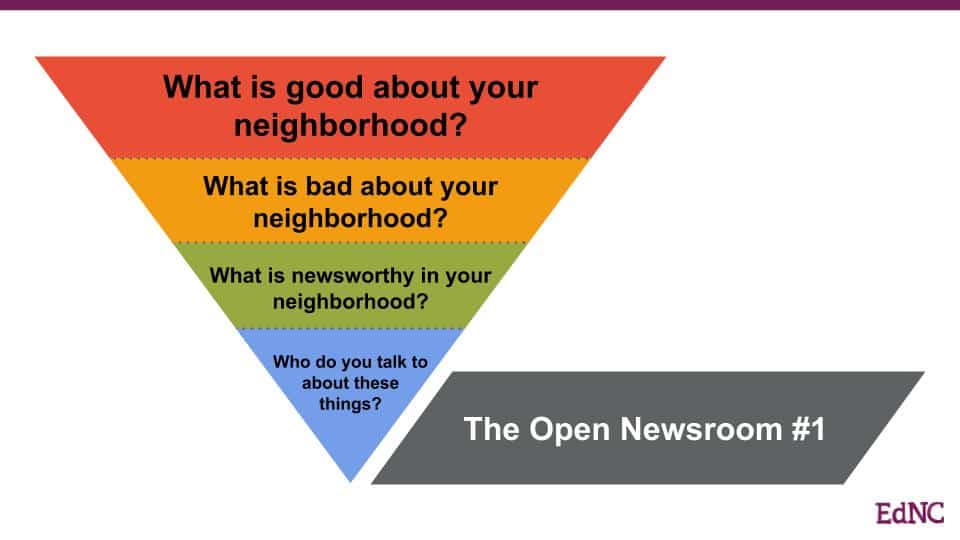
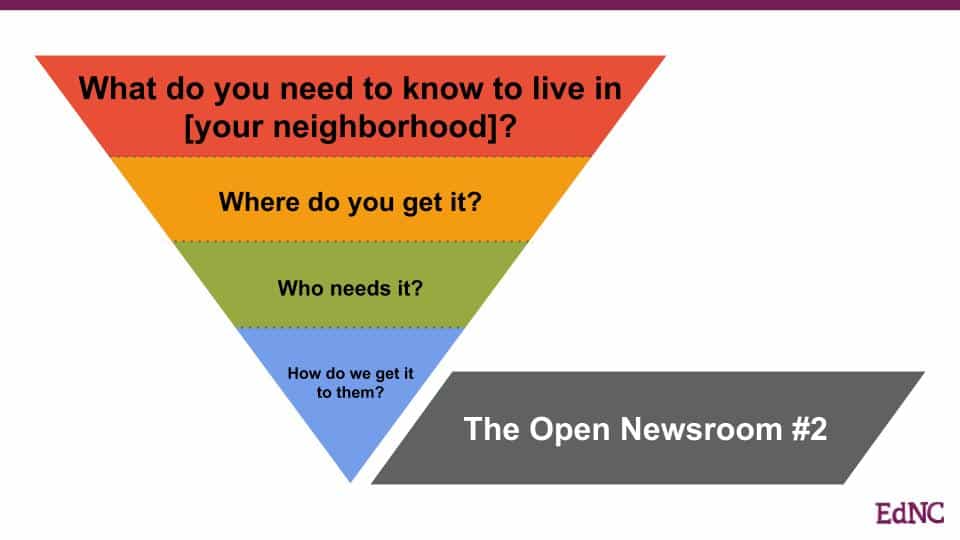
Listening funnels are what allowed us to think about the second big part of our challenge, which came from a moment of inspiration from my colleague Alex Watson from the BBC News. As we walked one morning during MTC, Alex looked at me and said, “OK, so you reach more people who give a damn? What’s next? You all are focused on engagement. Don’t you want to show them you give a damn about them?”
He is spot on. And these funnels, when executed well, are all about showing your audience you give a damn about them through listening paired with action.
We ask folks a question. We lift up their statements. Their experience and insights inform our work and further define the topic under consideration. And then we explore what needs to happen next — together.
But did we reach more people who give a damn?
All of these design-do loops added up to something. They helped us think in news ways about our editorial approach, our audience focus, how we shape our work, and what we do with our work once its published.
My colleague Eric Frederick will probably say I’ve buried the lede by saying this so late in the piece, but, yes, it all added up to our best-read year by far.
We brought more than 470,000 readers to EdNC.org in 2019 — an increase of more than 65% over 2018.
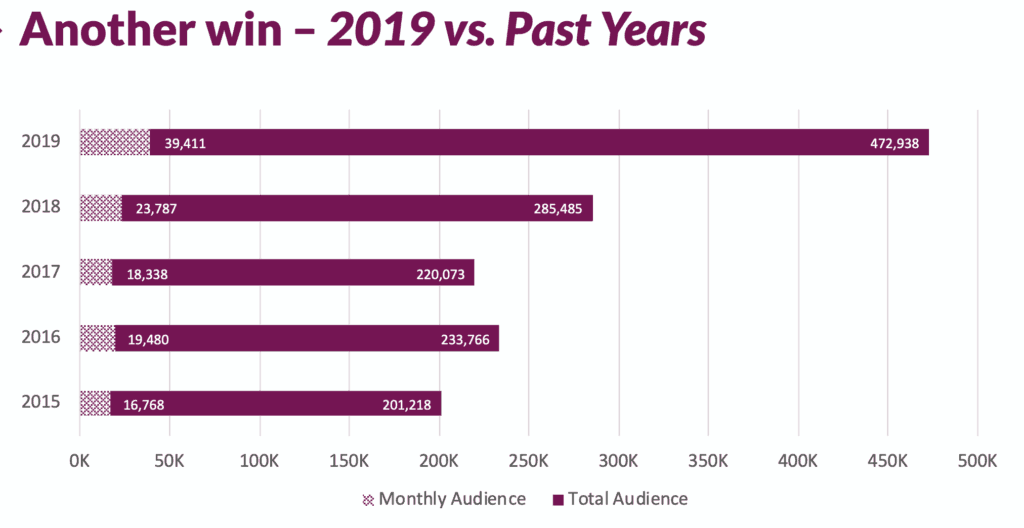
And even more exciting for our future — we reached most of these folks during the last six months of the year.
And we couldn’t have done it without the entire team buying in. For one of our largest design-do loops in terms of resources, we closed up shop for a week in August, so our entire team could sharpen their skills on headline writing, social media, videography, photography, and engagement. Ryan Tuck and Austin Gragson pulled together a remarkable set of exercises for our team. We brought in experts, ran design-thinking exercises, talked about our vision for our work, and grew as a team.
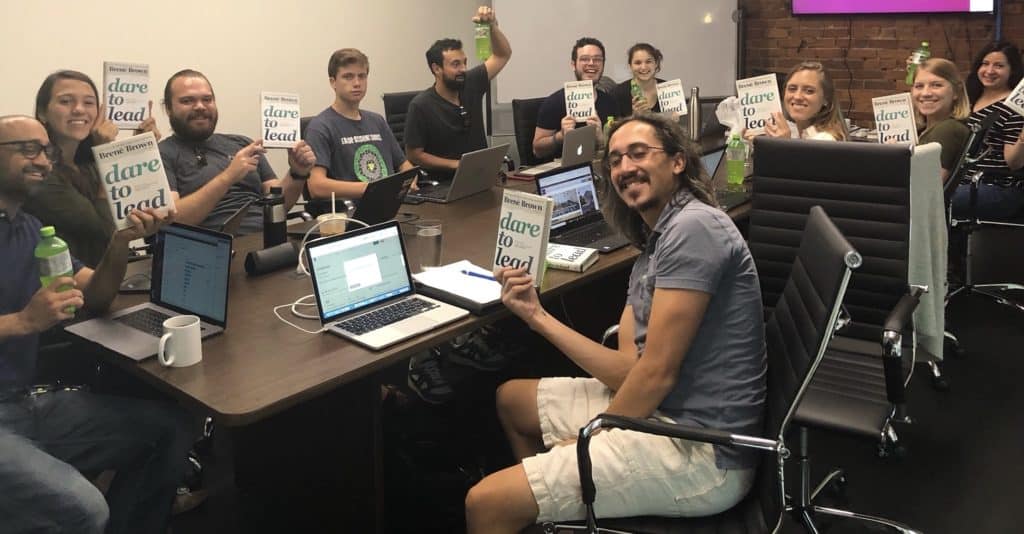
Why does reaching more audience members matter? Because, in part, civic news organizations have two big levers for creating change through content:
- Closing news gaps: Showing up at committee meetings, state board meetings, and other areas where policy is shaped and reporters are too rarely present.
- Explanatory journalism: Answering audience information needs, lifting up solutions, breaking down complex issues.
When it comes to closing news gaps, showing up and producing content is one big measure of impact.
When it comes to explanatory journalism, the number of people we reach matters as Richard Tofel of ProPublica has explained so brilliantly. If we explain complex issues or lift up solutions to pressing problems, but few people read about them, do they have impact?
So, yes, reaching more audience members matters to us, but how we reach them matters to us more.
What is next as we look at 2020?
After we reach even more people who give a damn about education in North Carolina, what’s next for EdNC and our work through Reach with other media outlets?
First, we are going to continue to innovate our approach to email.
Mary Willson, who joins our team next week, has been blazing a trail on email for some time. We have also been working with our colleagues Carrie Porter and Emily Rosemon on new approaches.
You may have noticed a new look to the Daily Digest and the Weekly Wrap, but more changes are coming. And we are changing by listening to our users.
It has been said that “email is the new homepage” for civic news organizations like EdNC. In a busy world, many news consumers are using email to cut through the endless stream of content and find out what they need to know today to do their jobs, contribute as citizens, or keep up in conversation.
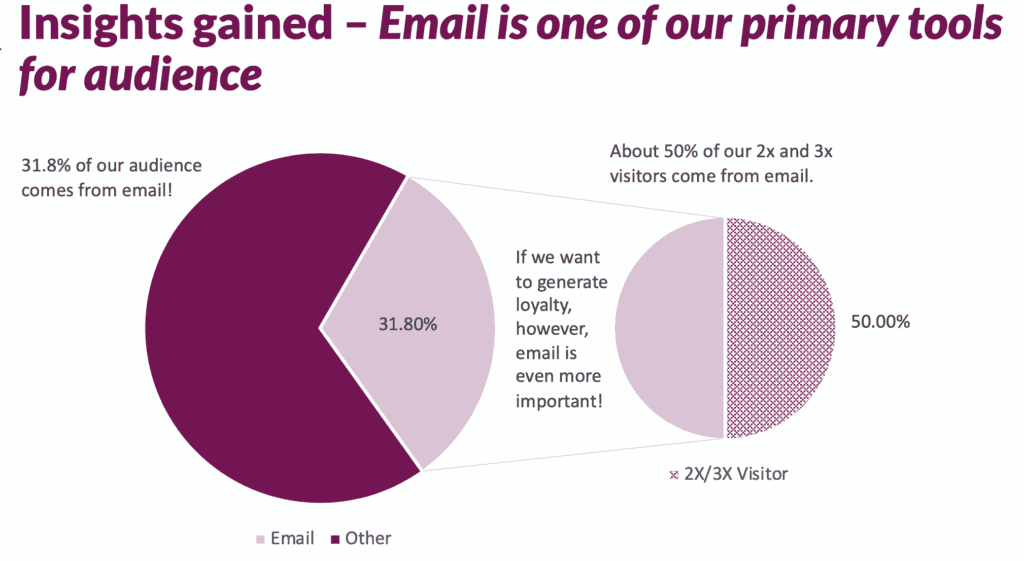
After email, we will iterate our digital media approach, search strategy, and continue to grow our community engagement work. We are doing so by bringing in experts from across the country who will shape and sharpen our work over the course of 2020. Few civic news organizations, local media startups, or community groups have the resources to leverage these experts. Our hope is a significant investment in bringing these folks together will improve our work, but also our Reach suite of tools, playbook, and approach. In time, we hope to make Reach available to the whole industry.
My hope is that by the end of 2020 our listening funnels at EdNC and the other outlets we work with will look more like an interconnected delta. And as a result, more of our audiences will know we care deeply about their lived experience.
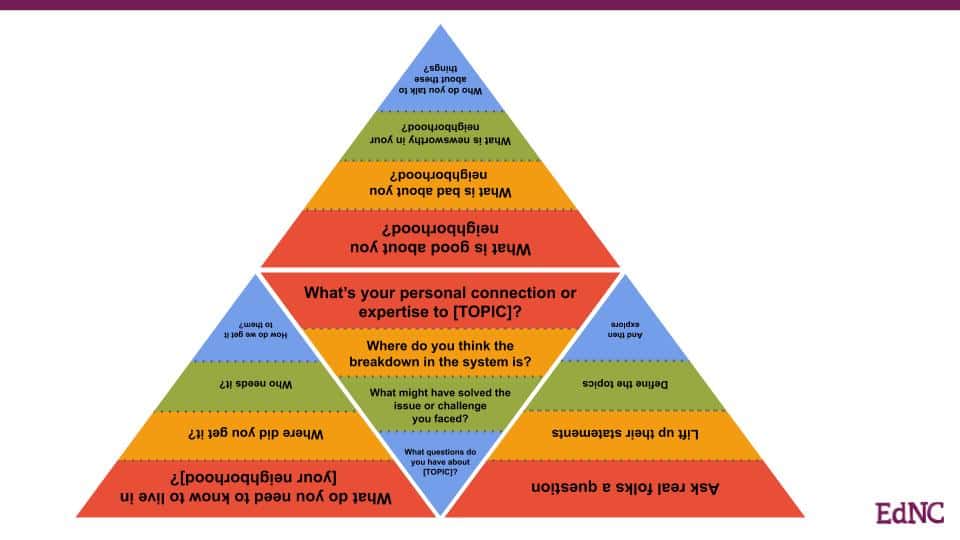
A special note of thanks to everyone in the 2019 MTC class who have shaped my life and career in ways too numerous to count: Gavin Allen, Phil Alongi, Ashley Alvarado, Neil Brown, Neal Carruth, Travis Daub, Katie den Daas, Jason Farkas, Ignacio Fidanza, Noreen Gillespie, Lee Hill, Anna Johnson, Mitra Kalita, Amy Kovac-Ashley, Sally Lehrman, Sara Lomax-Reese, Sam Lyon, Maeven McGovern, Bill Nichols, Erika Owens, Birgit Rieck, Mark Sappenfield, Fran Scarlett, David Smydra, Jeff Sonderman, Tory Starr, Mackenzie Warren, Alex Watson, Morwen Williams, JJ Yore, Charlie Baum, Karen Gordon, Tim Griggs, Quentin Hope, Doug Smith, and Pia Agliati. You always have a friend in North Carolina.
